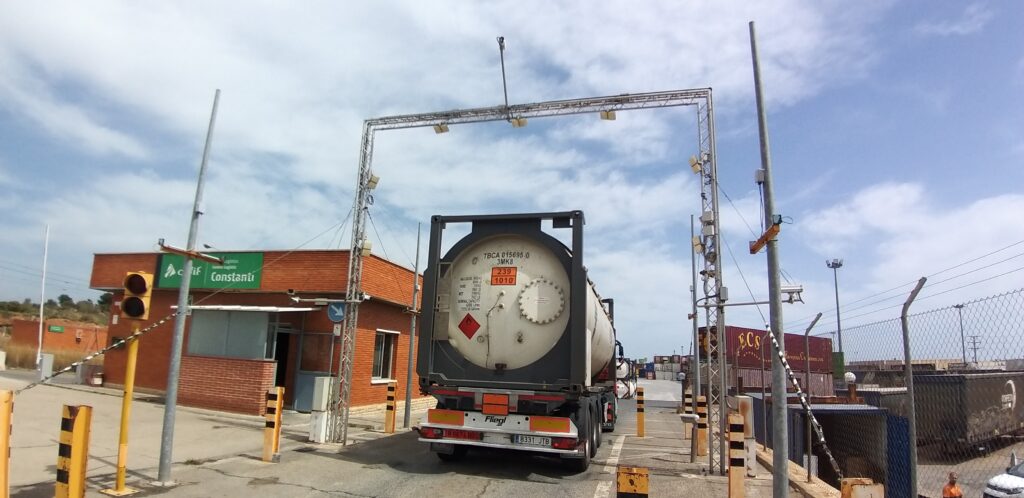The journey of Optical Character Recognition (OCR) is a testament to the relentless pursuit of technological advancement. Born from the need to convert printed or handwritten text into machine-readable data, OCR has evolved into a powerful tool that impacts industries far and wide.
The port industry, in the constant quest for efficiency and productivity, one of the most notable technological advances for managing data is OCR. We will explore how it has evolved from its reliance on expensive hardware to become an essential tool driven primarily by software. How this affects port operations and information management.
The Origins of OCR
The concept of optical character recognition dates back to the 19th century, when inventors such as Emanuel Goldberg dreamed of machines capable of automatically reading and interpreting printed text. The first OCR machines were relatively primitive and relied on basic pattern recognition. They operated mechanically and used patterns of light and shadow to detect letters in printed documents. However, these early systems could recognize limited fonts and required text to be accurately aligned.
The real breakthrough in OCR technology came with the electronic age in the 1950s. Machines such as the “IBM 704” could recognize printed characters and convert them into electronic data, but witl limitations. Requiring expensive and specialized hardware, they marked the beginning of what we know today as OCR.
OCR in Industry
As OCR technology matured, its applications expanded into various industries, each benefiting from its ability to extract data from images. A few years ago, implementing OCR in industrial environments, such as the port industry, required powerful and expensive hardware. Traditional OCR systems were limited by the processing power of local computers and could often only be used on dedicated workstations.

Advancements in OCR
The journey of OCR has been marked by significant milestones, each contributing to its broader adoption and increased capabilities.
The introduction of machine learning marked a major leap forward in this technology. This algorithms allowed OCR systems to adapt and learn from data, enhancing their ability to recognize a broader range of fonts and writing styles. Also, the integration of neural networks, particularly deep learning, revolutionized OCR. Deep learning algorithms enabled OCR systems to handle even more complex tasks. Such as recognizing handwriting, reading distorted text, and understanding context.
One of the most significant transformations in OCR technology has been the optimization of algorithms and the development of advanced software. Allowing to operate efficiently on a variety of platforms and improved the accuracy of the conversion into digital data. Reducing dependence on expensive hardware.
Benefits for the Port Industry
The port industry benefits greatly from this evolution. The ability to perform OCR on cloud servers or mobile devices means greater flexibility and mobility in data capture. As an example, AllRead’s Agile Recognition Software (ARS) automatically processes images taken by fixed camera and provides digital extraction of the information of interest. AllREad I2TI provides “as a service” and “on the edge” OCR capabilities, enabling efficient tracking of cargo assets.
IT engineers and port operations professionals can access and process critical information more efficiently and in real time, without the need to be physically present at a workstation.
The Future of OCR
As OCR technology continues to evolve, we can expect further integration with data management and logistics systems in the port industry. This will allow for more complete automation of processes and greater efficiency in cargo handling.
In this context of technological evolution, we can highlight AllRead’s ARS solution. But how does AllRead differ from traditional OCR solutions? The answer lies in its innovative approach:
- Adaptation to Challenging Conditions: AllRead’s OCR technology offers several advantages over traditional OCR solutions. It excels in challenging conditions, such as those encountered in operational environments, where factors like movement, blur, wear and tear, and rotation can hinder data extraction. AllRead’s robustness ensures data accuracy and reliability capture.
- Designed for the Industry: AllRead’s technology it is compatible with existing OCR access control solutions and information systems: Gate operating systems (GOS), terminal operating systems (TOS), Port community systems (PCS) etc.
- Accuracy and Agility: AllRead offers a unique combination of high accuracy in data extraction and agility in implementation. It can be adapted to existing processes and hardware, avoiding obsolescence and retraining to address new casuistries, ensuring a better return on investment compared to conventional OCR solutions on the market.
“AllRead’s mission, which is to develop deep learning-based technology for detecting and digitalizing text, codes, and symbols in supply chain operations. Their Automatic Reading Software (ARS) processes images from fixed cameras, extracting valuable information for integration into existing systems”.
Adriaan Landman, COO & Co-founder of AllRead
The evolution of OCR towards the minimal use of hardware is transforming the way the port industry handles and processes data. From its modest origins in the mechanical age to software-driven efficiency in the digital age, OCR has come a long way. AllRead represents a vanguard in this evolution by offering a highly adaptable and accurate information detection solution that overcomes common challenges in operational environments. [Read about our success case with APBA]
Are you interested in implementing OCR solutions in your port operation? Contact us today to learn more about how this innovative technology can benefit your cargo handling!
Follow us and subscribe to our newsletter
If you want to keep up to date with the latest news about technology in port logistics, subscribe to our newsletter. You will regularly receive the most important content and news from our blog in your mailbox.
Follow us also on social media: LinkedIn, Twitter and YouTube.